Refer to the exhibit, which shows the IPsec phase 1 configuration of a spoke.
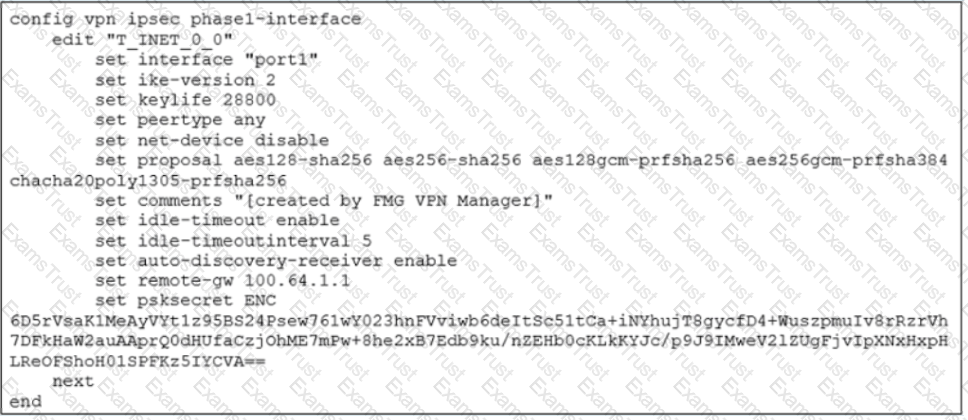
What must you configure on the IPsec phase 1 configuration for ADVPN to work with SD-WAN?
Which are three key routing principles in SD-WAN? (Choose three.)
Refer to the exhibits.
Exhibit A
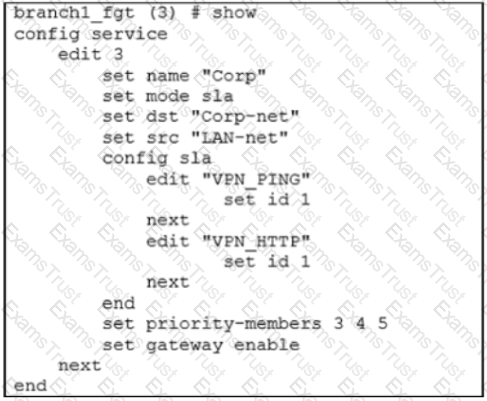
Exhibit B -
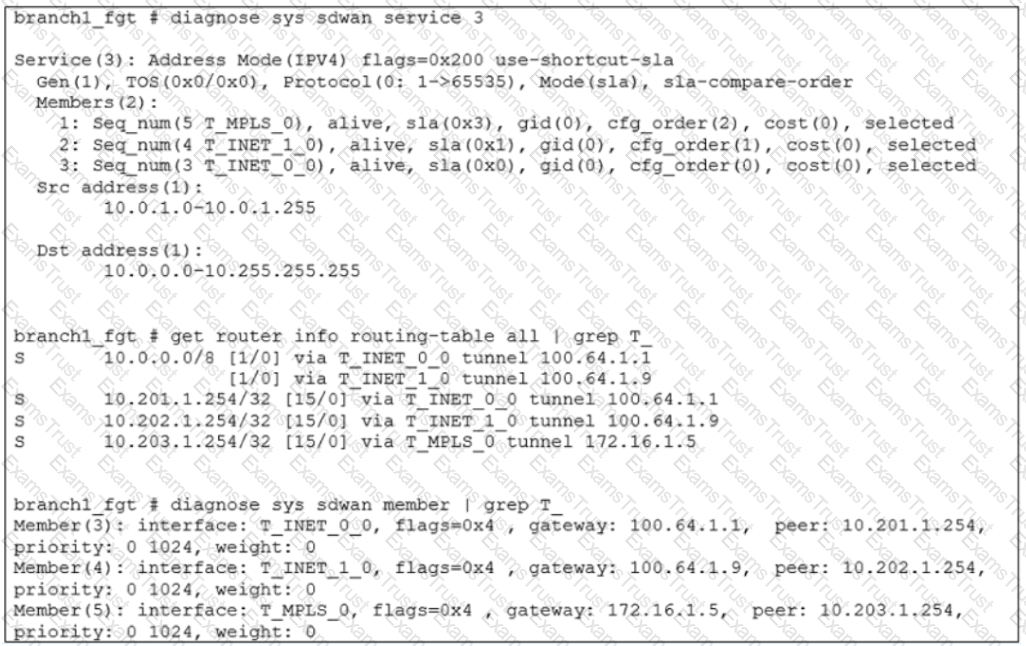
Exhibit A shows the configuration for an SD-WAN rule and exhibit B shows the respective rule status, the routing table, and the member status.
The administrator wants to understand the expected behavior for traffic matching the SD-WAN rule.
Based on the exhibits, what can the administrator expect for traffic matching the SD-WAN rule?
What are two benefits of using the Internet service database (ISDB) in an SD-WAN rule? (Choose two.)
Refer to the exhibit.
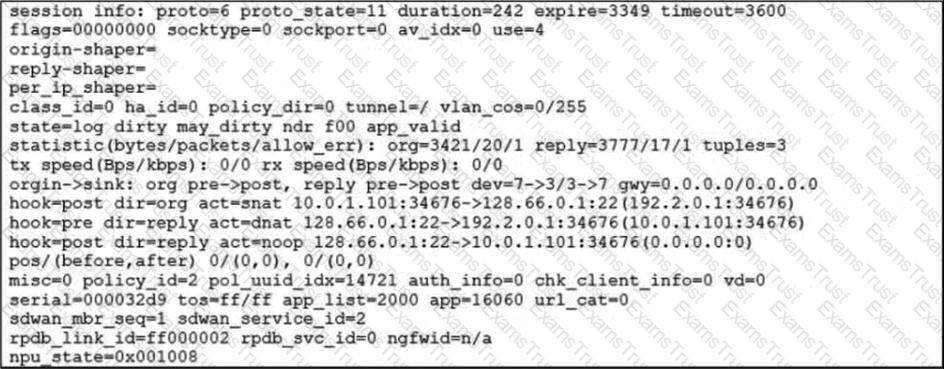
Which statement explains the output shown in the exhibit?
What are two reasons for using FortiManager to organize and manage the network for a group of FortiGate devices? (Choose two )
Which statement about using BGP for ADVPN is true?
Refer to the exhibit.
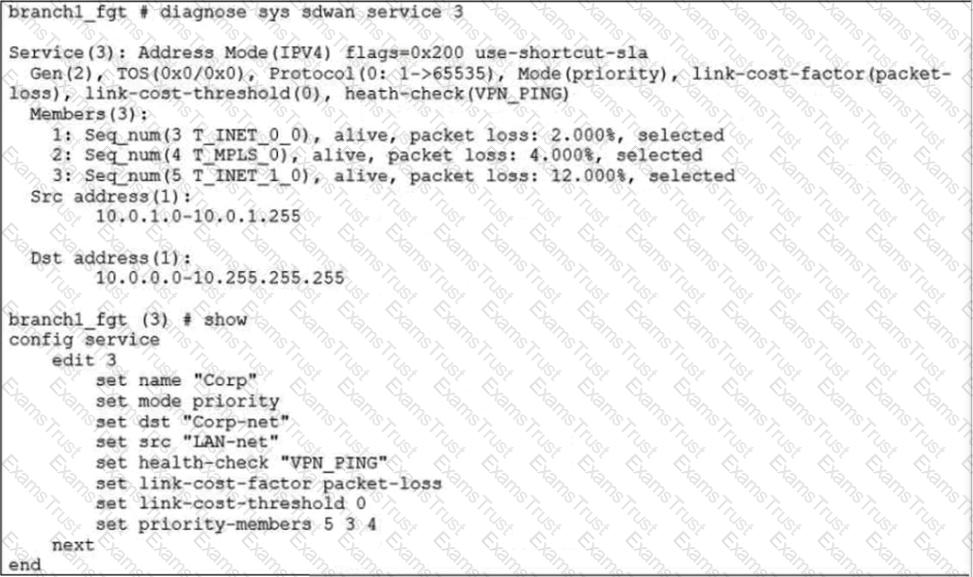
The exhibit shows the SD-WAN rule status and configuration.
Based on the exhibit, which change in the measured packet loss will make T_INET_1_0 the new preferred member?
Which components make up the secure SD-WAN solution?
Refer to the exhibit.

The device exchanges routes using IBGP.
Which two statements are correct about the IBGP configuration and routing information on the device? (Choose two.)
Refer to the exhibits.
Exhibit A

Exhibit B

Exhibit A shows the source NAT (SNAT) global setting and exhibit B shows the routing table on FortiGate.
Based on the exhibits, which two actions does FortiGate perform on existing sessions established over port2, if the administrator increases the static route priority on port2 to 20? (Choose two.)
Refer to the exhibit.

Which configuration change is required if the responder FortiGate uses a dynamic routing protocol to exchange routes over IPsec?
Refer to the exhibit.

Which statement about the role of the ADVPN device in handling traffic is true?
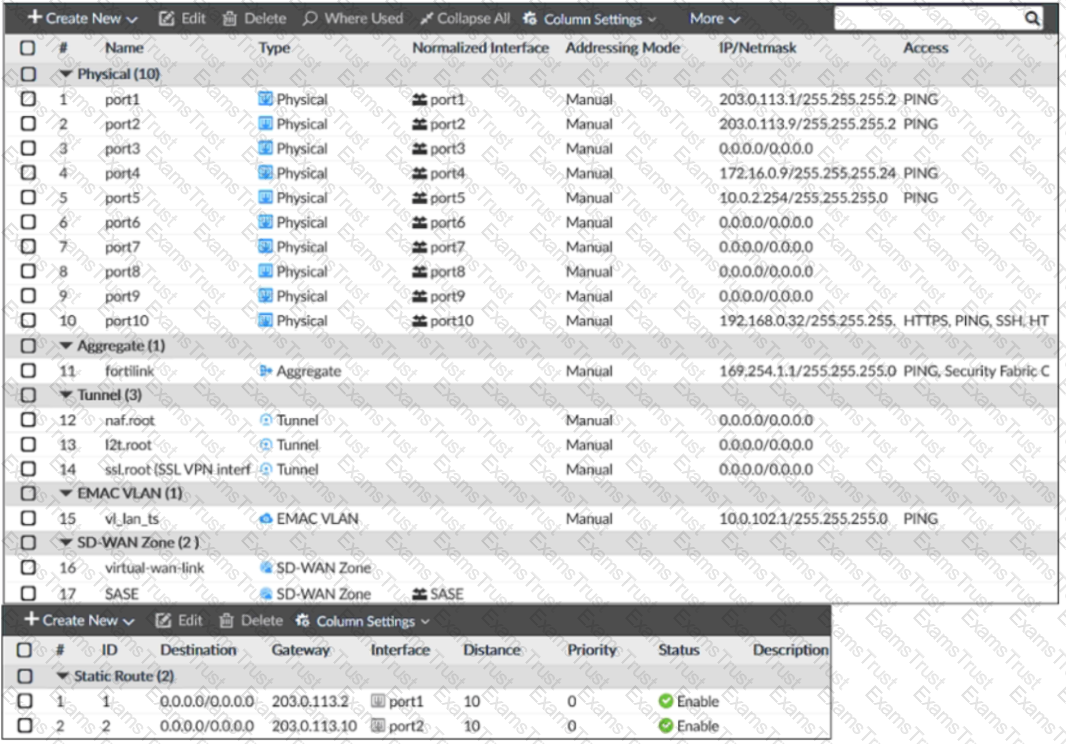
Exhibit B –

Exhibit A shows the system interface with the static routes and exhibit B shows the firewall policies on the managed FortiGate.
Based on the FortiGate configuration shown in the exhibits, what issue might you encounter when creating an SD-WAN zone for port1 and port2?
Which two statements about SD-WAN central management are true? (Choose two.)
Which best describes the SD-WAN traffic shaping mode that bases itself on a percentage of available bandwidth?
What are two common use cases for remote internet access (RIA)? (Choose two.)
Which three matching traffic criteria are available in SD-WAN rules? (Choose three.)
Refer to the exhibit.
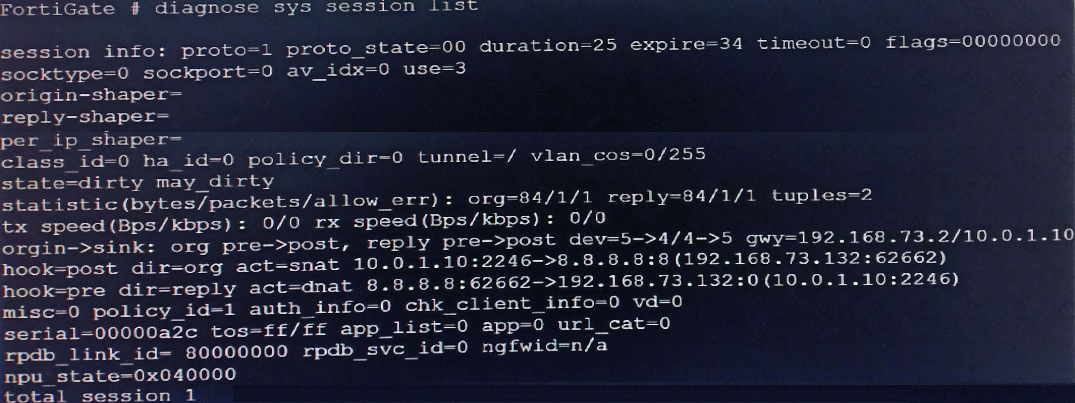
Based on the exhibit, which statement about FortiGate re-evaluating traffic is true?
Which CLI command do you use to perform real-time troubleshooting for ADVPN negotiation?
What is a benefit of using application steering in SD-WAN?